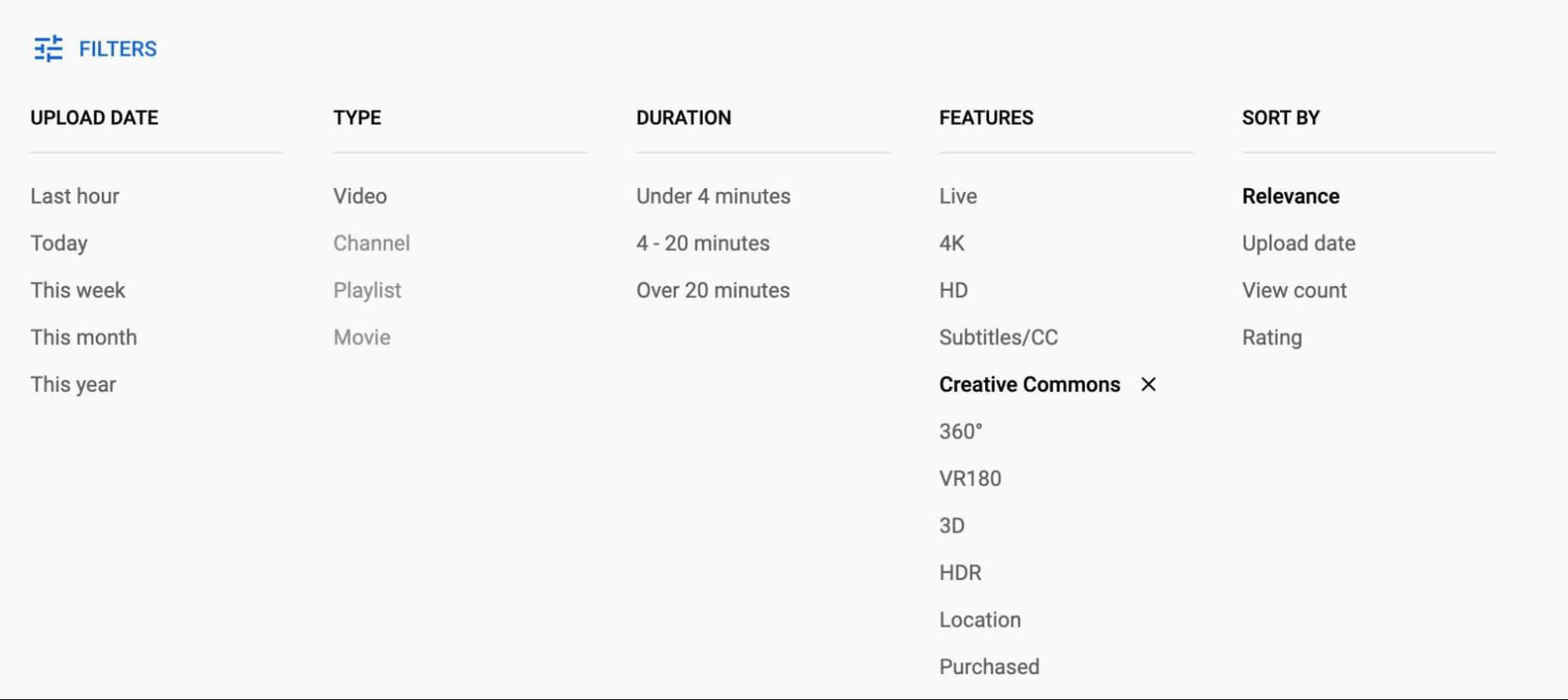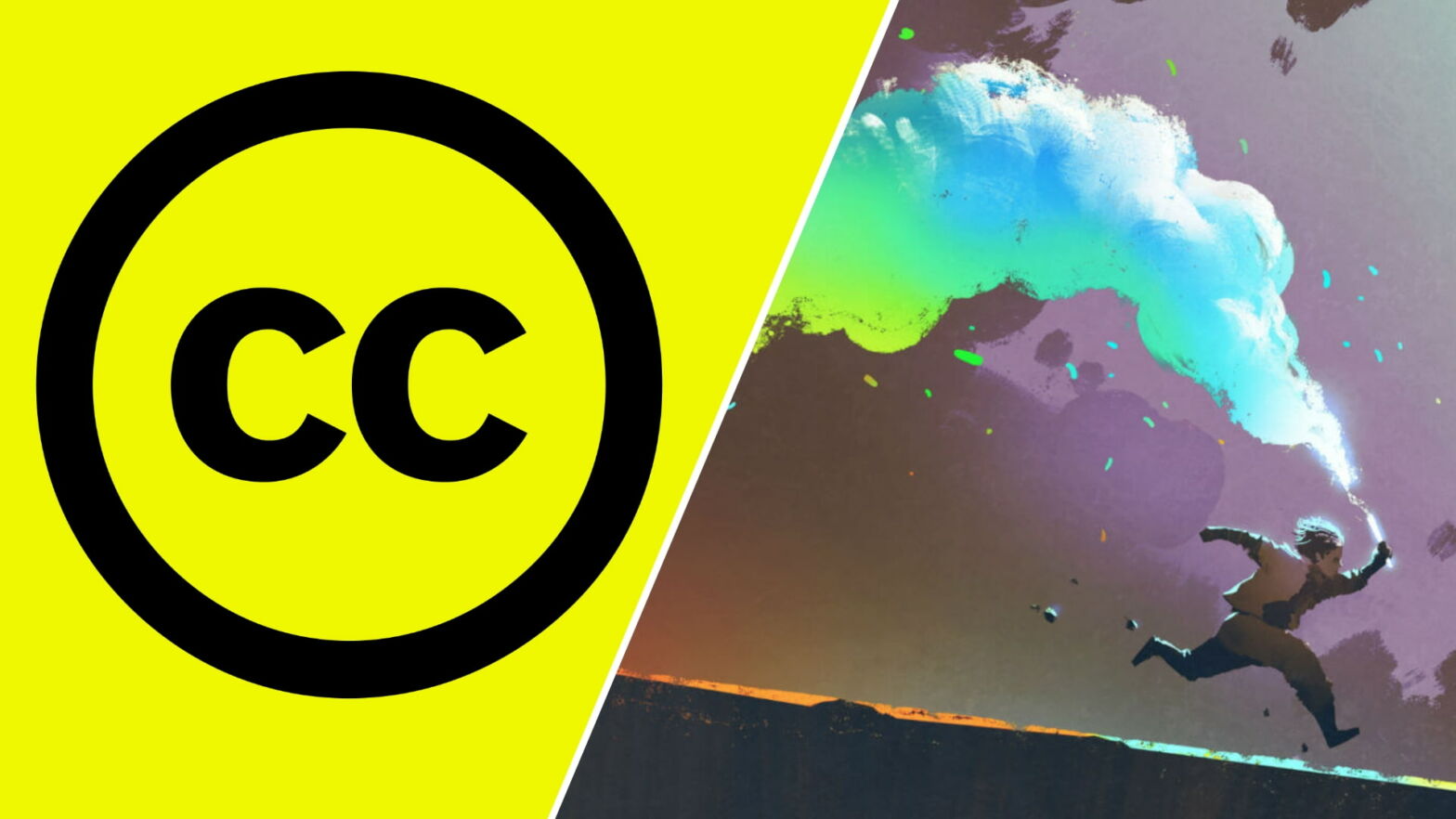You want to make a movie. You’ve come to the right place! But once you get started, you realize all of the hidden expenses beyond getting a camera and hiring some actors. There’s music involved and perhaps a video clip you need to insert somewhere. Suddenly, that film project costs hundreds more dollars than you were expecting, but never fear! Knowing what Creative Commons is will inevitably help you at some point along your filmmaking journey. So, what is Creative Commons and how can low-budget producers benefit from it?
Define CREATIVE COMMONS
What does Creative Commons mean?
Before diving into the Creative Commons definition, it’s first important to understand copyrights. Every creative work from music to a screenplay is protected by a copyright, which essentially means the owner controls the work and how it’s used.
However, some creators choose to waive the copyright so that anyone can use the work. That’s where Creative Commons comes into play.
CREATIVE COMMONS DEFINITION
What is Creative Commons?
Creative Commons is an organization designed to help creatives find works that fall within fair-use laws. Normally, when a work has a copyright, no one other than the creator can distribute and profit off of it. However, other creators don’t mind and actively encourage others to use their work. Creative Commons has collected all of these together into one database for artists to find.
Different licenses are available that tell you precisely what you can do with each work. Regardless, you still need to attribute the original creator.
Creative Commons User Rights Regardless of License:
- Distribute the work
- Copy the work including uploading
- Performing or displaying the work to the public
- Format copies onto CDs or DVDs
- Communicate the work by making it available online
Creative Commons gives artists freedom like never before. It allows you to find videos you can use off YouTube or images on Wikimedia Commons. In fact, Wikipedia put out its own handy definition video if you ever need a refresher.
What is Creative Commons? • Wikimedia Foundation
Still, it never hurts to be too cautious when you’re dealing with other people’s creative material. Here are some of the finer details so that you can be 100% confident that the items you’re using are, in fact, free to use.
CREATIVE COMMONS Definition
Creative Commons vs. public domain
You shouldn’t go to the Creative Commons assuming you can use whatever you want without a care in the world. After all, it’s not the public domain.
Works in the public domain are properties where a copyright has either expired or the user failed to renew a copyright properly. Numerous intellectual properties have gone into the public domain over the years as most readily seen with Disney and its myriad of fairy tale adaptations like Aladdin, The Beauty and the Beast, and The Little Mermaid. Interestingly enough, while Disney has benefited greatly from the public domain, the company is responsible for preventing many modern works from now entering it, as explained in this video.
How Mickey Mouse Destroyed the Public Domain • Learning About Creative Commons
It’s worth looking around the public domain for your own script ideas because you don’t have to credit or pay the original author. In fact, many movies have already entered the public domain, so if you need to show a character watching something in your next movie, then one of the free-to-use films from this list will be easiest to utilize. However, Creative Commons is a bit different.
You won’t find full story ideas within the Creative Commons unless of course a photo inspires you to write the next great American screenplay. Instead, you’ll find bits and pieces of artwork you can incorporate into your own work. And even then, you typically need to credit where credit’s due. To understand that, it’s paramount to go through the various Creative Commons licenses out there and what each one means.
CREATIVE COMMONS License Types
What is Creative Commons license
Relax, a Creative Commons license isn’t as difficult to get as a driver’s license. When a creator uploads a product into the Creative Commons, they want other people to use their work. However, they get to set the terms for how that work is used, as explained in this video.
Creative Commons Licenses Explained • Licenses for Creators
Basically, when you want to download a song or video clip, you’ll see it come with a marker that begins with “CC” and is followed by a sequence of letters or numbers. Here’s what each one means.
CC0
The creator has decided to place a work within the public domain. Anyone can use it in any medium without providing credit.
CC BY
The creator has decided to allow others to build upon, adapt, remix, or distribute the work within any medium, including for commercial use. However, attribution must be given to the creator.
CC BY-SA
The creator has decided to allow others to build upon, adapt, remix, or distribute the work within any medium, including for commercial use. Attribution must be given to the creator, but it must be shared within the same terms as the original creator.
That means if you sample a song within a song you yourself create, then you would need to make that song available with a CC BY-SA license.
CC BY-NC
The creator has decided to allow others to build upon, adapt, remix, and distribute the work but only in noncommercial mediums. That means businesses cannot utilize this license and proper attribution must still be given to the creator.
CC BY-ND
The creator has decided to allow others to distribute and copy the work in any medium, but it must remain in an unadapted form. You cannot change the work in any way, and if you use it, you must attribute the creator. The work can be utilized in commercial projects.
CC BY-NC-SA
The creator has decided to allow others to build upon, adapt, remix, and distribute the work in any medium as long as it's for noncommercial purposes. You must attribute the original creator, and you must assign it the same license for which the original work was under. In this instance, your work would also require a CC BY-NC-SA license.
CC BY-NC-ND
The creator has decided to allow others to distribute and copy the work within any medium. However, it cannot be changed in any way, and it can’t be used for commercial purposes. You must attribute the original creator.
CREATIVE COMMONS DEFINITION AND EXAMPLES
How to use Creative Commons license
On the Creative Commons website, you can see what other artists have contributed to the cultural landscape. For filmmakers, they’ll likely be interested in browsing all of the music available to use without paying. Remember: just credit the artist somewhere in your project!
You can also find Creative Commons tools on a variety of websites. This allows you to search for videos, images, and audio from elsewhere to potentially have an easier time tracking down what you need.
For instance, if you want to see what YouTube videos are safe to use, then type in whatever you want in the search bar. From there, click on filters and select “Creative Commons,” which is listed under “Features.”

YouTube Creative Commons • Search Filters
Other websites, like Flickr, Vimeo, and BandCamp, should have similar filtering processes.
Plus, once you have your project wrapped, you can put it into Creative Commons yourself. This was the process undertaken by filmmaker Nina Paley, who uploaded her full-length animated film, Sita Sings the Blues, to the Creative Commons with a CC BY-SA license.Sita Sings the Blues • Creative Commons Movie
Paley received a fair amount of attention surrounding her work, something that may not have happened had she pursued more traditional release paths.
If you’re an artist of any kind, then the Creative Commons is a valuable resource. Millions of works are in there, and you never know what may inspire you next.
UP NEXT
Free Sound Effects
The Creative Commons isn’t the only place you should turn to when you’re filming on a budget. A litany of resources are out there to help you create a fantastic film without breaking the bank. When you need a gunshot or screech sound effect, there are numerous services available where you don’t have to pay a dime. StudioBinder has collected plenty of free resources for your convenience, so check out our next blog on where to find unique sounds with minimal effort.
Up Next: Free Sound Effects →
Showcase your vision with elegant shot lists and storyboards.
Create robust and customizable shot lists. Upload images to make storyboards and slideshows.
